By Eric Dahlquist - When I was a kid growing up in New York, there was this Mrs. Wilson who lived down the road, and she had a dark green '39 Buick coupe. Every day she'd drive by, pointing that long slender hood toward town, and the deep color of the lacquer seemed a mobile pool of jade neatly defined by delicate chrome moldings. There was that special sound Buick straight-eights used to make and a sort of mechanical whirring effect 7.00 x 16's created on the macadam road. It was all part of the deal, and no matter how many endless summers of my youth Mrs. Wilson and her lovely green lacquered Buick automobile rolled past, it was always a redefinition of something called class.
And they've still got it -at least in their ads. Take the one with the airline captain standing next to the mirror-finished Riviera on a farm somewhere. In the background is this hangar with a neat Aero Commander twin inside, worth maybe a hundred grand. That's super-class, baby - for when you're older. For when you're younger, there's the Buick Gran Sport, which is just dripping with latent class. So latent, in fact, we almost totally ignored the car ultil the day a GS 400 was available for a test. You see, we got the car confused temporarily with the Skylark Custom series that has this chrome strip zooming big as life down across the side of the car -like suddenly it's 1953 again. Click! We were turned off. But we were wrong
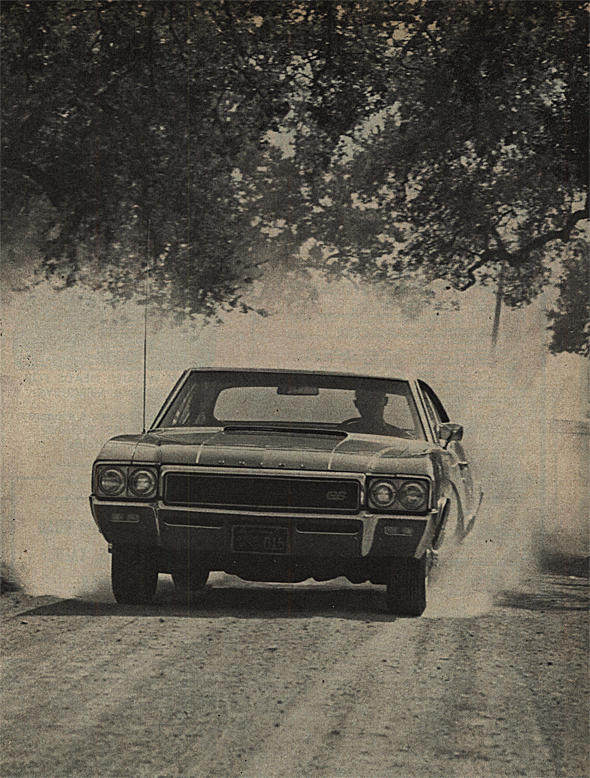


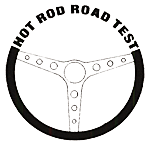
fact that wheelbases of 112 inches (and above 116 inches) were the magic sizes in seriously reducing the "hop" condition, and that their 115-inch 1967 jobs were tuned smack in the middle of the wrong frequency band. But you couldn't very well cram a four-door or wagon into a 112-inch wheelbase situation, and the coupes couldn't be stretched to 116 and still look right, so -presto! -two A bodied wheelbases. With three full inches out of the '67 two-door wheelbase, fourand-a-half more could be lopped from the overall length, not only reversing the trend of ever more huge intermediate cars but allowing their jobs amazingly good maneuvering size. The first time you pull a U-turn on a narrow street you'll be shocked when you make it on the first try. Sorry, gang, but old Buick has done it again.
The GS had a driving feel all its own, unique in the way the GTO is, only different because it's more subtle. Part of it is the strength of a special, heavier gauge, super-beef frame and some the result of stiffer springs, shocks, two stabilizer bars and the fact the rear suspension geometry is revised to reduce road shock and provide greater directional stability. Whatever they've
surprising majority of casual observers who thought the GS 400 was really a '68 Riviera or at least some mini-sport version. The interior of our test car was furnished with Madrid-Grain vinyl in a color called Buckskin that went so well with the Burnished Saddle exterior lacquer that more than one viewer felt compelled to compliment the color combination. You knew his mind was motoring up some tree-lined driveway in East Egg all the way to the colonnaded mansion.
But some people in the Division are not entirely satisfied with the idea all their customers are well established individuals who dig the GS 400 only because it looks like a better-handling Junior League Riviera. No, there are those who believe it's just as critical to have the hot dog as well. To step off in the right direction, last year they fielded a new 400-430-inch engine family (fully described in the Nov. '66 issue of HRM and practically unchanged since) that erased completely any trace of the old "nail valve" onus. At first it looked like they weren't going to capitalize on the obviously superior breathing qualities of the power plant, but then some soul looked in the '68 dealer parts catalog and discovered a barge load
of rather specialized heavy-duty goodies that looked mighty like racing goodies. And they were -- just guide your optics to the chart provided; see the awakening that is quietly going on in Flint.
Our test car had the 340-hp engine and 3-speed Super Turbine that is a renamed Turbo Hydro and doesn't have the variable-pitch stator from last year that you could hook up to work manually for a couple of extra mph in high gear. Even though the car weighed in at 3820 pounds, it felt nimble enough, thanks mostly to the addition of a 3.42 gear ratio. Out at Irwindale, the thing went 15.20-91.30 on the first session which, of course, is not even on the road to the ball park. This lackluster showing was due to an unpredictable shifting box which the able crew at Reynolds Buick in West Covina remedied quickly, giving the car a whole new lease on life. At the same time, a set of Wildcat mufflers were installed which not only have a neat tone but add seven quick horsepower. A set of properly tuned headers (see chart) would have allowed a 40-horse improvement, but then that wouldn't be quite pure stock and would probably aggravate the already 5
In the damp, the Gran Sport's rear Goodyear Wide Tread tires were not bonded to the road, that is. Only in the water, mind you, but it's still a trifle daring doing "brodies" in rainy-day traffic. The rear end didn't mind a bit bottoming on just the right kind of bump, which can be more than a minor annoyance. But that will give us something to look forward to next year. That and the Saginaw power steering which feels like there is a molasses road-sense-damper through which the steering shaft must pass. It's a darned shame, too, because the car does so much better in a corner than you should expect from a Buick, if only there was a bit more of an idea what those beautifully sprung skins were going over.
Gran Sport styling is an either lor proposition -either you like it or you don't -seemingly in a ratio of about 5-to-1 for. The machine doesn't have the Skylark custom chrome side strip, and that's a good thing. GM Divisions seem pre-disposed to bring out trend setters like the Riviera and then style the rest of their line after it. How well this tack works can be partially appreciated by a
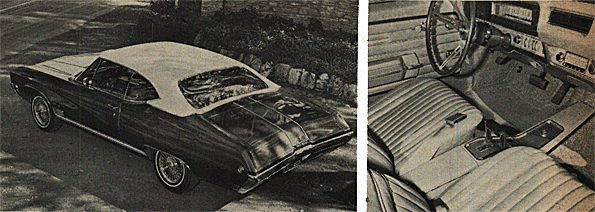
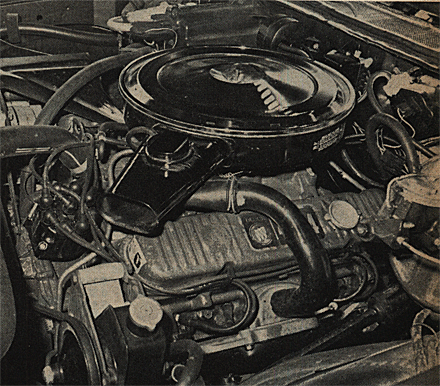 ABOVE -Would you believe it, droves of people thought the little old GS 400 was really a '68 Riviera. This can't be all bad. ABOVE RIGHT -Interior on our bus looked as if a bunch of European upholsterers stitched up the vinyl that could almost pass for leather. Dash, unfortunately, didn't carryon where the threads left off. GTO still sets the standard for sporty field. RIGHT -By the time they got all the stuff in the engine compartment, there wasn't much left for the engine. Plugs, however, were easier to service than most. Everything worked and nothing fell off.
ABOVE -Would you believe it, droves of people thought the little old GS 400 was really a '68 Riviera. This can't be all bad. ABOVE RIGHT -Interior on our bus looked as if a bunch of European upholsterers stitched up the vinyl that could almost pass for leather. Dash, unfortunately, didn't carryon where the threads left off. GTO still sets the standard for sporty field. RIGHT -By the time they got all the stuff in the engine compartment, there wasn't much left for the engine. Plugs, however, were easier to service than most. Everything worked and nothing fell off.
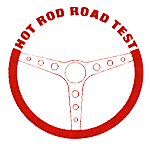
percent lean carburetor condition. The first thing a serious racer should do is augment the stock fuel pump with an electric unit which will pass all the fuel the carburetor needs.
The next session at Irwindale saw the GS just break into the 14's with a best of 14.95-94.90, or at least 1/4-second less than a good GTO, Olds 4-4-2 or Chevelle will do with comparable gear ratio. We sliced most of this away with the addition of our own cold-air package using some Olds parts, finally coming up with a 14.70-96. Now, we're not going to say that this is what a GS would run like if it only had its own outside air pickup because, lo and behold, come January 1, the plenum scoop they now have on the hood will be reworked to put them in the same league with their sister divisions.
Here are some of the pieces listed in Buick's super performance chart. Note rather large main bearing, grooved for oil at that. Performance 12.20-115?
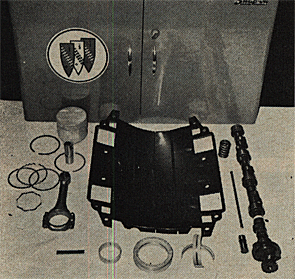
So far no one has used the plenum area to tap in fresh atmosphere to the carb on the street, but just ask anyone in NASCAR what a dandy high-pressure area it is.
Nearly all of our strip runs were back-to-back with very little time between each shot for cooling, and never once did those big beautiful binders do anything but their job. Buick's brakes have been almost legendary in an industry more concerned (for the longest time) with making a vehicle go than stop, but these were better than ever -and they weren't discs. The 268.6 inches of swept area is quite impressive, but it's the drums them-selves that really catch your eye -finned both front and rear (more fins on the front) and aluminum on the front, to boot.
As great as we thought this car was, a few sour notes dimmed our general enthusiasm. The roof line on the GS 400 is quite low, and the bucket seats mounted quite high, and, if you're unfortunate enough to be tall, you will not be able to wear a hat while driving (or even a long haircut). That's one thing. Another is the rather obvious lack of rear seat passenger room with the front seats adjusted all the way back. While the interior could not really be faulted for fit, material texture or color, the instrument panel just didn't blend in within the scheme. We hate to say this in every test, but the GTO panel layout is a hard act to follow. Lastly, there is the rather distinct loss of quality control in the fit of the various panels, hood and trunk lid. Maybe we're harping about something an American workman doesn't have the ability to do any longer, but when you layout more than four grand for a car, you've just got to demand a higher standard of assembly, Even with this, the GS 400 is the kind of car you can drive and drive and not get tired of. The cold-air packages, cams, forged pistons' - all of them are very important in this market - but you've got to be able to live with the car, too. For a while there may be a few machines that put the GS down at the track, but on the way to the track, that's a horse of a different color. Wherever Mrs, Wilson is, we'll bet she's driving a Buick!
| VEHICLE | |
| Buick Gran Sport 400 | |
| PRICE | |
| Base price $3104, As tested | $4505 |
| ENGINE | |
| Cylinders | 8 |
| Bore and stroke | 4.040 x 3.900 |
| Displacement | 400 cu. in. |
| Compression ratio | 10.25 to 1 |
| Maximum horsepower | 340 @ 5000 rpm |
| Maximum torque | 440 @ 3200 rpm |
| Valves: Intake | 2.005 in. |
| Exhaust | 1.630 in. |
| Camshaft: | |
| Lift | 4187 intake, .4482 exhaust |
| Duration | 2980 in., 3150 ex. |
| Carburetion | Quadrajet |
| Exhaust system | 2.25-in. exhaust pipe |
| 2.00-in. tail pipe | |
| TRANSMISSION | |
| Type | 3-speed automatic |
| Ratios: 1st | 2.48 |
| 2nd | 1.48 |
| 3rd | 1.00 |
| 4th | N.A. |
| DIFFERENTIAL | |
| Type | Salisbury Hypoid, posi-traction |
| Ring gear diameter | 8.5 in. |
| Ratio | 3.42 to 1 |
| BRAKES | |
| Type | Drum type, duo-servo |
| Dimensions: Front | 9.505 in. |
| Rear | 9.505 in. |
| Swept area | 268.6 sq. in. |
| SUSPENSION | |
| Front | Independent coil spring |
| Rear | Coil springs and arms |
| Stabilizer | 980-in. diameter |
| Tires | Goodyear Wide Tread F70 x 14 |
| Rims | 6.00-in. wide |
| Steering gear: | |
| Type | Saginaw, power |
| Ratio | 15 to 1 |
| Turning circle | 38.5 ft. |
| Turns of steering wheel, | |
| lock to lock; | 4.06 |
| PERFORMANCE | |
| 0-30 | 3.4 sec. |
| 0-60 | 7.5 sec. |
| Standing quarter-mile:94 mph in 14.78 sec. | |
| DIMENSIONS | |
| Wheelbase | 112 in. |
| Front track | 59.35 in. |
| Rear track | 59 in. |
| Overall height | 52.8 in. |
| OveraII width | 76 in. |
| Overall length | 196.8 in. |
| Curb weight | 3542 |
| Test weight | 3820 |
| Crankcase capacity | 5 qt. |
| Cooling system | 16.6 qt. |
| Fuel tank | 20 gal. |
| Part | Group | Part No. |
| Camshaft - Stage I | 0.519 | 1383853 |
| Pushrod, tubular | 0.426 | 1383852 |
| Valve spring and damper assembly (272 lbs.) | 0.303 | 1383851 |
| Spring, oil pump (60 lbs.) | 1.609 | 1383854 |
| Part | Group | Part No. |
| Camshaft - Stage II (not recommended for the street) | 0.519 | 1385557 |
| Valve train and damper assembly | 0.303 | 1383851 |
| Pushrod, tubular | 0.426 | 1383852 |
| Spring, oil pump (60 lbs.) | 1.609 | 1383854 |
| Part | Group | Part No. |
| Piston and Pin, (400 cid) | 0.629 | 1394179 |
| Piston and Pin, (430 cid) | 0.629 | 1394179 |
| Note: Recommended running clearance of these pistons is .006-.0010-inch. (.008-.012 wide open throttle applications.) Chrome piston pins are to be installed in pistons by heating small end of rods to approximately 450 degrees. | ||
| Part | Group | Part No. |
| Connecting rod bearings (std.) | 0.616 | 5468714 |
| Connecting rod bearings (+.001) | 0.616 | 5468713 |
| Part | Group | Part No. |
| No. 2, 4 Main Std. | 0.096 | 5469067 |
| No. 2, 4 Main +.001 | 0.096 | 5469066 |
| No. 2, 4 Main +.002 | 0.096 | 5469065 |
| No. 3, Thrust Std. | 0.101 | 5469064 |
| No. 3, Thrust +.001 | 0.101 | 5469063 |
| No. 3, Thrust +.002 | 0.101 | 5469062 |
| Part | Group | Part No. |
| rod, metering | 3.802 | 7034822 |
| Part | Group | Part No. |
| Piston rings 400 cid | 0.643 | 1394202 |
| Piston rings 430 cid | 0.643 | 1394203 |